#inca art
Explore tagged Tumblr posts
Text

Coati effigy vessel Inca style, Acomayo (Department of Cuzco, Peru) c. 1400-1532 Clay & pigment, h18 x w8.50 x d32.50 cm Museo de América No. 08570
The above piece was also just added to Indigenous art section of the coatis in art image bank:
#coati#coatimundi#Indigenous art#Inca art#South American art#pre conquest art#ceramics#effigy vessel#Museo de América#website link#Peruvian art#15th century art#16th century art
229 notes
·
View notes
Text

quipu | c. 1476 - 1532 CE | inca (modern-day peru)
in the museo larco collection
10 notes
·
View notes
Text
A few of the best 'Inca inspired' masks my 3rd graders made for multicultural day.
(Medium- pasta, beans, spray paint, on poster board)
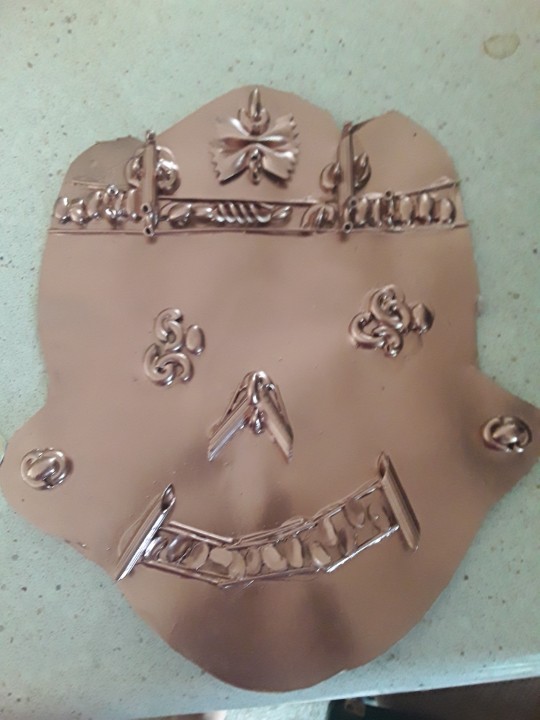
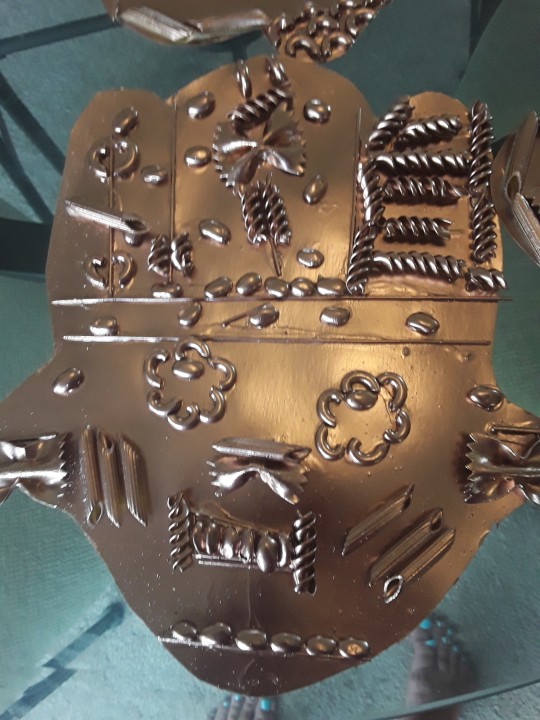
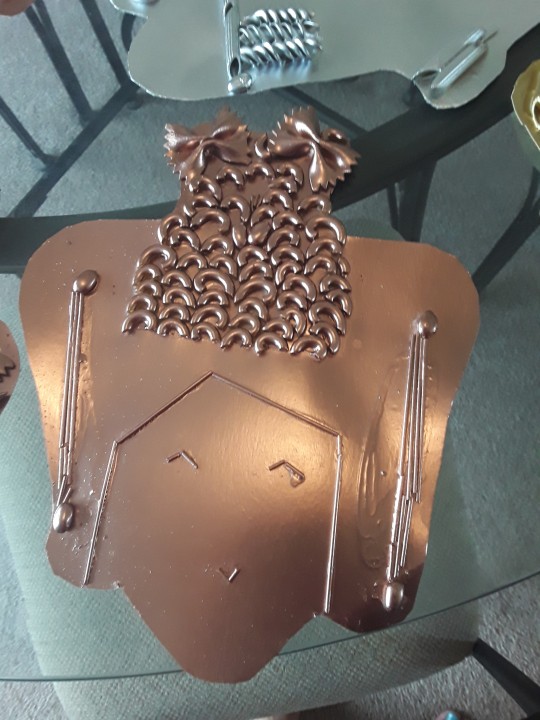
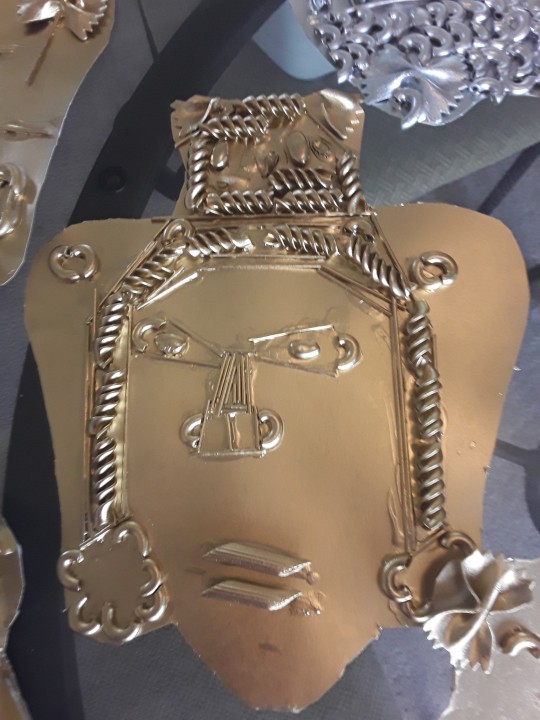

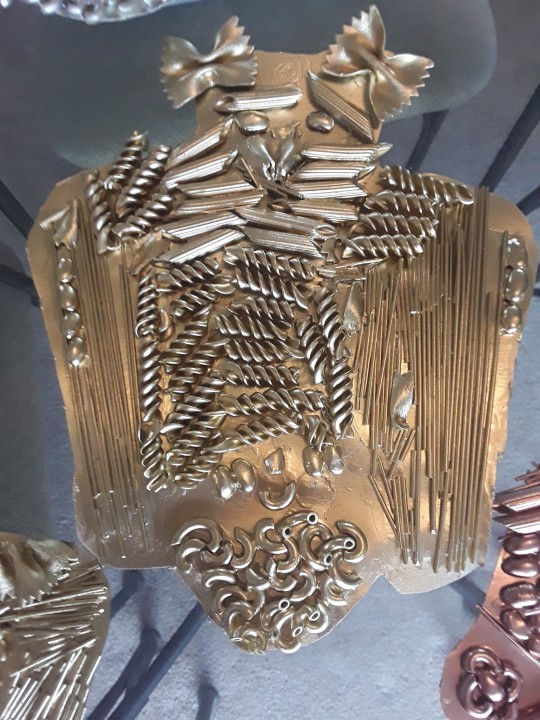
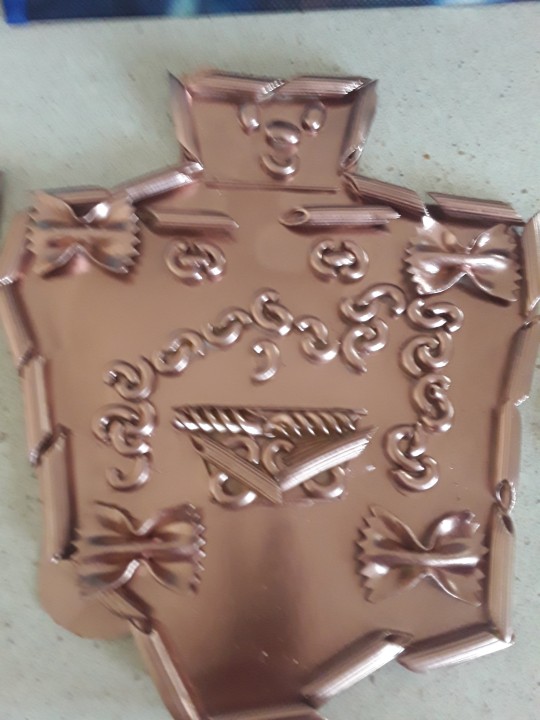
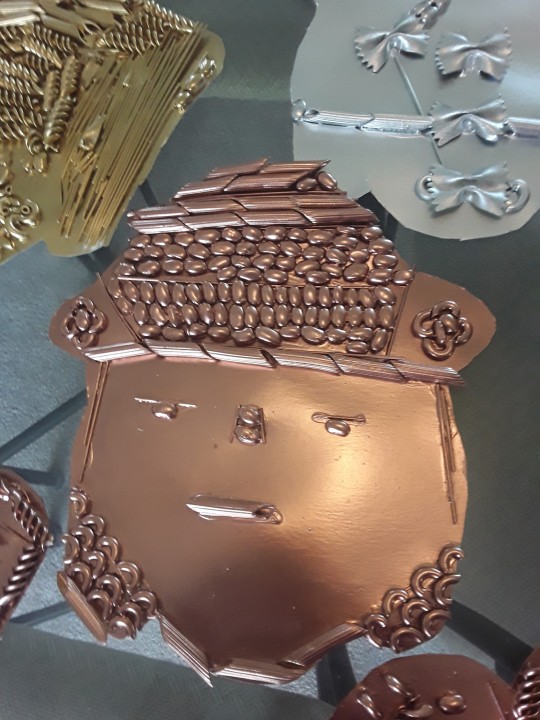
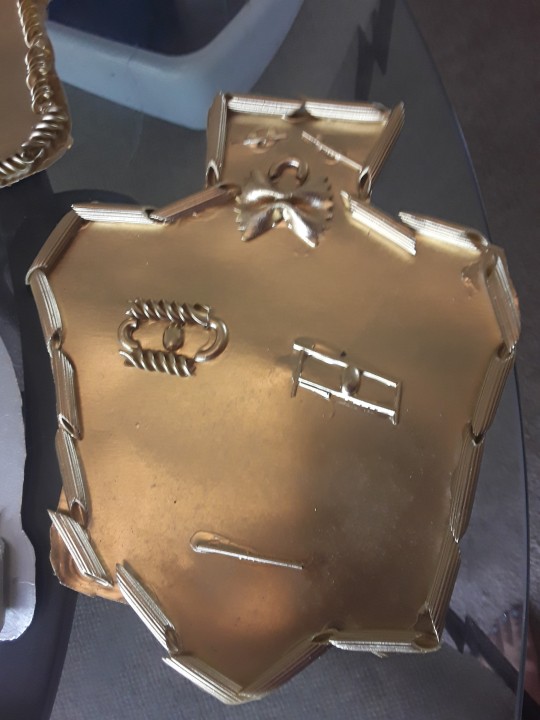
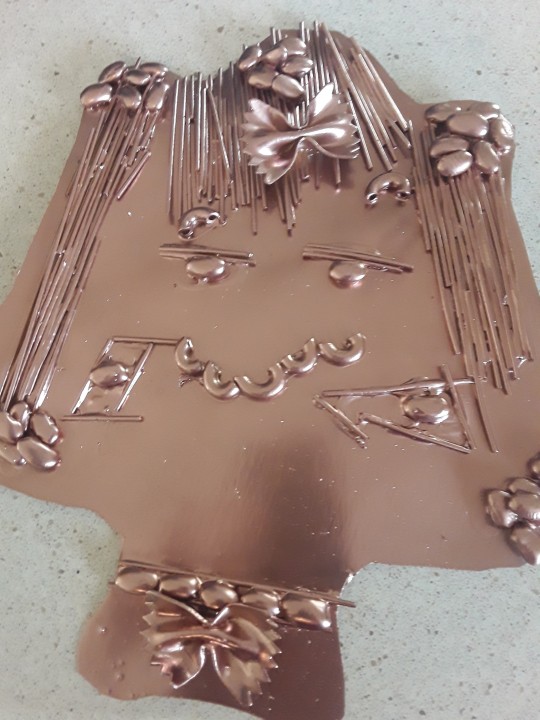
0 notes
Text
500-year-old Snake Figure from Peru (Incan Empire), c. 1450-1532 CE: this fiber craft snake was made from cotton and camelid hair, and it has a total length of 86.4cm (about 34in)
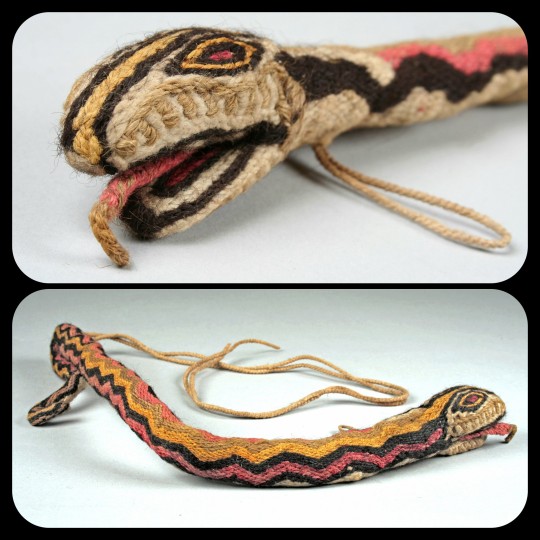
This piece was crafted by shaping a cotton core into the basic form of a snake and then wrapping it in structural cords. Colorful threads were then used to create the surface pattern, producing a zig-zag design that covers most of the snake's body. Some of its facial features were also decorated with embroidery.
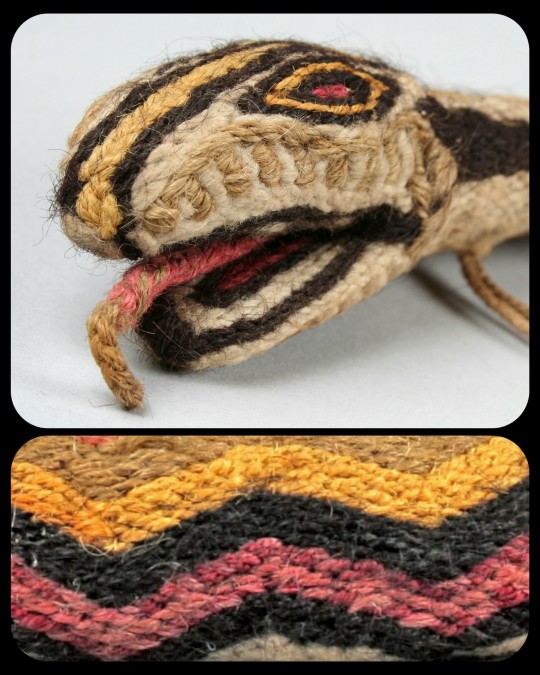
A double-braided rope is attached to the distal end of the snake's body, near the tip of its tail, and another rope is attached along the ventral side, where it forms a small loop just behind the snake's lower jaw. Similar features have been found in other serpentine figures from the same region/time period, suggesting that these objects may have been designed for a common purpose.
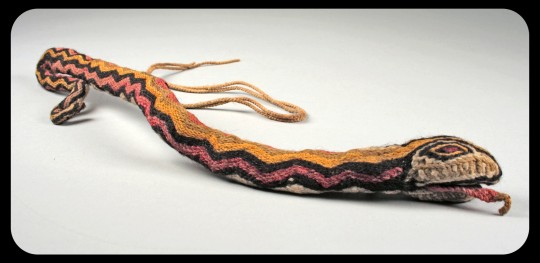
Very little is known about the original function and significance of these artifacts; they may have been created as decorative elements, costume elements, ceremonial props, toys, gifts, grave goods, or simply as pieces of artwork.
The Metropolitan Museum of Art argues that this figure might have been used as a prop during a particular Andean tradition:
In a ritual combat known as ayllar, snakes made of wool were used as projectiles. This effigy snake may have been worn around the neck—a powerful personal adornment of the paramount Inca and his allies—until it was needed as a weapon. The wearer would then grab the cord, swing the snake, and hurl it in the direction of the opponent. The heavy head would propel the figure forward. The simultaneous release of many would produce a scenario of “flying snakes” thrown at enemies.
The same custom is described in an account from a Spanish chronicler named Cristóbal de Albornoz, who referred to the tradition as "the game of the ayllus and the Amaru" ("El juego de los ayllus y el Amaru").
The image below depicts a very similar artifact from the same region/time period.
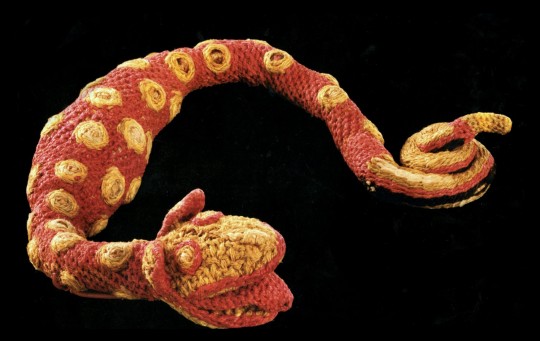
Why Indigenous Artifacts Should be Returned to Indigenous Communities.
Sources & More Info:
Metropolitan Museum of Art: Snake Ornament
Serpent Symbology: Representations of Snakes in Art
Journal de la Société des Américanistes: El Juego de los ayllus y el Amaru
Yale University Art Gallery: Votive Fiber Sculpture of an Anaconda
#artifacts#archaeology#inca#peru#anthropology#fiber crafts#americas#pre-columbian#andes#south america#art#snake#effigy#textiles#textile art#embroidery#history#stem stitch#serpent#amaru#mythology#andean lore#fiber art#incan empire#indigenous art#repatriation#middle ages#flying snakes tho
979 notes
·
View notes
Text


Tiny silver llama, Incan, circa 1400-1534
from The Walters Art Museum
475 notes
·
View notes
Text
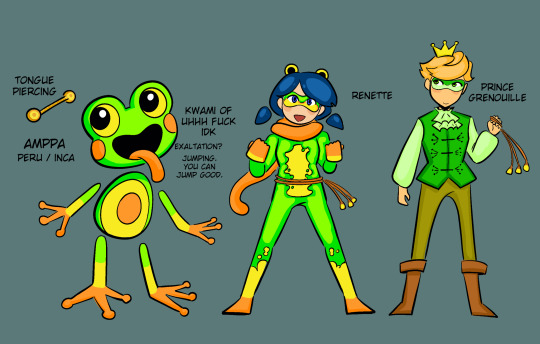
frog kwami hasnt been able to get out of my head for months so hopefully designing it will finally let the idea leave. this is Amppa (coming from "hamp'atu", Quechua for "frog"), and my funny idea for them is that their food should be french fries because we have the Inca to thank for potatoes AND fries is one letter off from flies. ok thanks for coming 2 my ted talk
#i still stand by not making more Aztec/Nahua kwamis though. but Inca is fine#and me personally I think more directly indigenous kwamis are cool as fuck#if i do more peruvian kwamis though i might go with guinea pig because idk i find it funny#wissym art#marinette dupain cheng#adrien agreste#ml oc#kwami#kwami oc
132 notes
·
View notes
Text







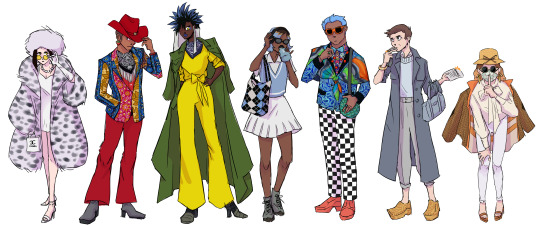
Was inspired by this post by @mist-the-wannabe-linguist drawing the outfits from this "steal her look" bird post by @tenderanarchist, @inthefallofasparrow, @floral-hydrate, and @octy-in-boots. please click for higher quality or i'll cry
#steal her look#steal his look#birds#character design#snowy owl#scarlet macaw#inca jay#blue jay#ocellated turkey#shoebill#shoebill stork#barn owl#my art#digital art#doodles#doodle#digital sketch
524 notes
·
View notes
Text

happy 2nd anniversary to what continues to be the game of all time!! 🪐
#i was a teenage exocolonist#teenage exocolonist#exocolonist#iwatex#iwatec#dys exocolonist#dysthymia exocolonist#ocs#incandescent#ill be real i forgot it was today panicked and then whipped this up in like one go LMAO#not to be dramatic!! but this game fundamentally changed me as a person just a lil bit#i wrote my uni paper about it!! i have sm love and respect for the devs#my art#2024#paintings#anyway i specifically wanted to draw this dys outfit for a while now because i saw it in the artbook months ago and died#the alien mouth hood killed me. he's just a little guy#i had a thought whilst working on this that inca's older brother (ram) who's big into like. scientific research and documenting stuff#could've been amongst the first people that made books about vertumna#especially since the colony doesnt really use physical books. but it's a step in the direction of them having their own culture :)#gave this to their lil sibling like lookie here! shapes and colours!
249 notes
·
View notes
Text

Avian August Day 20: Inca Dove Photo used (c) Jeffery Moore, Macaulay Library
#artwork#birds#procreate#digital aritst#digital painting#digital art#digital#art#avian august#pigeon#dove#inca dove
132 notes
·
View notes
Text

November 24, 2024 - Gray-winged Inca-Finch (Incaspiza ortizi) Found in parts of northwestern Peru, these tanagers live in high altitude desert scrub. They eat seeds and other plant foods, as well as insects, foraging in dense vegetation on or near the ground, alone or in pairs. Little is known about their nesting behavior though their breeding season probably starts in May and nestlings and juveniles have been observed from June to September.
57 notes
·
View notes
Text
#TwoForTuesday :

Ear Ornaments with Ibis Inca: Ica Valley, Peru south coast, 1200-1450 Gold w/ garnet inlay a: 3.5 × 4.6 cm (1 3/16 × 1 13/16 in.) b: 3.2 × 4.5 cm (1 1/4 × 1 3/4 in.) The Art Institute of Chicago 1955.2594 a-b
#animals in art#birds in art#bird#birds#ibis#gold#ear ornaments#jewelry#metalwork#Inca art#South American art#Peruvian art#Andean art#Indigenous art#pair#Two for Tuesday#Art Institute of Chicago
19 notes
·
View notes
Text

Bare your fangs
#vtm oc#vtm art#vtm#vampire#vampire the masquerade#salubri#oc#original character#completed work#april 2025#inca's ocs#oc: willow
41 notes
·
View notes
Text

Tried doing Chasca some justice! Wanted to mix in a cowgirl aesthetic cause the Wild West was super diverse so like why not LOL (I am horrifically obsessed with the Wild West, I just don’t show it too much 💀)
Original design for comparison:



71 notes
·
View notes
Text

daughter of the sun ☀️
repaint of an illustration by jean torton on a mythology book i had as a kid. i always marvelled at those illustrations.
#digital art#digital illustration#illustration#photoshop#my artwork#my art#artblr#artist support#artists on tumblr#art#inca#mythology and folklore#sun#gold#golden
20 notes
·
View notes
Text

A pair of gold beakers depicting birds in a cornfield, Inca, circa 1100-1450
from The Art Institute of Chicago
449 notes
·
View notes
Text


Did i hear bitter exes? ☝️Here’s my design of cyberknife (ft young techno)🙏
#art#doodles#technoblade#dsmp fanart#dsmp techno#c!techno#piglin!technoblade#cyberknife#inca like people#minecraft villager#bitter exes#divorced husbands
42 notes
·
View notes